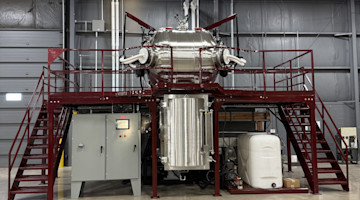AMT’s 2025 Winter Economic Forum wrapped up on a positive note for the manufacturing industry despite challenges such as persistent inflation, a tight labor market, and changes coming from a new presidential administration. Oxford Economics maintained its 2025 machine tool order projections at 20.1% growth from 2024 and doubled its 2026 projections from 5.2% to 11%, indicating strong expansion over the next two years.
On his first day in office, President Donald Trump issued a record 26 executive orders, including freezing new regulations, declaring a national energy emergency, and addressing immigration. The administration, bolstered by a Republican-controlled Congress, also signaled later action on tariffs and the extension of expiring provisions from the 2017 Tax Cuts and Jobs Act (TCJA). The administration believes these moves will create a business-friendly environment for U.S companies by reducing regulatory burdens, encouraging domestic investment, and fostering economic growth.
An extension of the 2017 tax cuts would preserve the provision allowing 100% bonus depreciation for capital investments, incentivizing businesses to invest in new equipment and expand operations. However, the erratic implementation of certain policies, particularly tariffs, creates a challenge for manufacturers. The inconsistency between policy signals and actual implementations makes cost forecasting difficult, especially for large-scale, long-term projects that require accurate quotes based on expected costs.
A core aspect of Trump’s campaign was his hardline stance on immigration. In January, the administration began enforcing stricter immigration policies, including freezing asylum processing and canceling migrant appointments. Net immigration is projected to drop from 1.1 million annually to 800,000, tightening an already constrained labor market. The manufacturing sector, which is composed of 19.1% foreign-born workers, will be particularly impacted. In 2024, the U.S. Chamber of Commerce noted 622,000 manufacturing jobs remained unfilled, highlighting the difficulty in finding talent even prior to these policy changes. To address this, businesses may need to consider attracting seasonal workers from industries like construction, expand recruitment to underrepresented groups like women, and potentially raise wages, which continue to lag behind other industries.
Despite the Federal Reserve’s efforts to curb inflation, it remains at 2.7%, still above the target 2%, with no clear signs of trending downward. While AMT’s principal economist Chris Chidzik suggests that the economy has achieved a "soft landing," the ongoing environment of elevated interest rates and inflation is pressuring companies to find innovative ways to recoup costs. Historically, economic downturns, such as the 2008 recession, prompted manufacturers to find ways to boost productivity for cost savings. It remains to be seen whether the current post-COVID economy will follow a similar pattern, which, in this era, is likely to be achieved by investing in AI and automation technologies. Recent data from the U.S. Manufacturing Technology Orders (USMTO) report shows a trend of increasing average order value for manufacturing equipment – outpacing the producer price index – suggesting that companies are adopting high-tech solutions to optimize operations and mitigate rising costs.
All things considered, 2025 is poised to be a strong year for the manufacturing technology industry based on economist projections from AMT and Oxford Economics. Expect companies to get creative in their solutions for compounding labor market strain and start prioritizing high-tech equipment for increased productivity.
Connect and Grow With AMT
For more insights like this, plan to attend AMT’s MTForecast 2025 event on Oct. 15-17 in Schaumburg, Illinois.
Did you know AMT’s Research Services team offers tailored data and analysis to help you navigate industry trends with confidence? Email research@AMTonline.org to get started!






